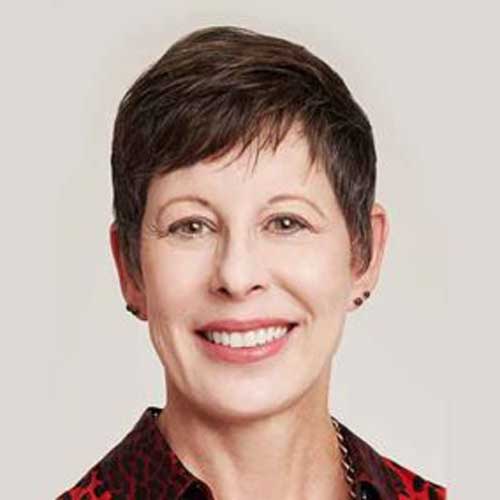Nine years ago, Jill’s father died. The year after that her husband left her for another woman. He
remarried and moved out of state while she remained with their two children, Jack and Alice, in the
house they had shared. The father saw his kids on holidays and for a couple of weeks every summer
when they flew out to stay with him.
Jill divided her time between caring for the kids and her mother, Estelle. Estelle had never learned to
drive, so Jill took over her father’s role, chauffeuring her mother to doctors’ appointments, seeing that
she got her hair and nails done, and grocery shopping. She did not mind paying the bills and handling
whatever little emergencies came up. Jill thought of herself as a nurturer, and she and Estelle got along
well. Jill told people how lucky it was that she and her mother “spoke with one mind.” After Estelle fell
and broke her hip and wrist, she moved into an assisted living facility. Jill visited every day until her
mother’s death last year.
In the years after the divorce, Alice and Jack did well in school. Jill made sure they kept busy with friends
and activities, but soon after Estelle’s death fourteen-year-old Alice began isolating and refusing to go to
school. She said the other kids made her feel left out and complained about head and stomach aches. Jill
attributed her daughter’s behavior to the trauma of losing her grandmother. Anxious visits to the
pediatrician revealed nothing out of the ordinary, so Jill tried alternative approaches such as
homeopathic remedies and acupuncture. Alice complied with her mother’s suggestions but still
struggled to get to school, describing herself as depressed and suffering from low self-esteem.
Toward the end of her marriage, Jill had initiating coaching with a therapist trained in Bowen theory. She
liked the family systems approach, but once the divorce was final, she felt she was too busy with her
children and her mother to continue. After two months of shuttling Alice from specialist to specialist, Jill
recalled her coaching days and the Bowen theory principle that when there is a problem in a child, it’s a
reflection of a problem in the larger family unit. The coach had called this the family projection process.
Jill decided to drop all the ineffective treatments and called her old coach.
During the first coaching session, Jill reviewed a timeline of events over the past decade. The devoted
wife, daughter, and mother identified the through line of her focus on taking care of others. After
Estelle’s death Jill had automatically shifted her anxious energy to her flailing daughter. She now saw
she had overreacted to relatively mild symptoms and committed to backing off and concentrating on
her coaching.
Three days after that appointment, Alice swallowed twelve acetaminophen tablets from a bottle in the
medicine cabinet and was rushed to an emergency room. Once they were back home, Jill called for an
urgent appointment with her coach. In that meeting, the coach suggested that Alice’s gesture could have
been a pushback reaction to the sudden shift in attention away from her as Jill she began the effort to
take more responsibility for herself. Although not to be taken lightly, an impulsive decision to gulp down
a handful of pills did not necessarily indicate a high level of suicidal intent. Jill ended her hour in a
thoughtful mindset, even more, convinced she was on the right path.
When Jill and her coach met four weeks later, she reported that Alice had attended school every day
without complaint and was back to her cheerful and sassy self. It was an upbeat appointment, unlike
one four weeks later.
During that session, Jill said she felt lower than she ever remembered – lower than during her
separation and divorce, and even lower than when her parents died. She couldn’t stop thinking that she
had nothing to live for anymore, especially since the kids were almost grown and would soon be out of
the house.
The coach’s questions revealed Jill’s failure as an adult to develop interests and goals for herself. She’d
even thought of her exercise routine as a way of staying attractive to her husband. Later, she worked
out to remain healthy for her mother and children. Under those circumstances, it was no wonder that
she’d recently lost motivation for going to the gym.
Much like her mother during Jill’s childhood, Jill’s life had been organized around taking care of others.
Jill had prided herself on being a supportive wife, devoted daughter, and dedicated mother. All that
giving had not kept Jill’s marriage together. Yet after the divorce, Jill had reflexively pivoted toward her
mother and children. Jill saw that her mother’s focus on others may have hindered her ability to
function better for herself in widowhood. Such a focus by Jill certainly wouldn’t help her own daughter
grow toward launching.
Jill’s coach encouraged her to consider all the women in her family tree, those who were primary
caretakers and those who had had careers. Her aunt was known in the family as an adventurer who
didn’t marry and spent her life working, traveling, and engaging in a variety of hobbies. Estelle had often
spoken disparagingly of her older sister, calling her selfish and unreliable. Jill had secretly admired her
aunt and decided to channel this long-deceased relative as she worked toward developing a life after
caretaking.
For the first time in memory, Jill is learning to keep the focus on herself.




0 Comments